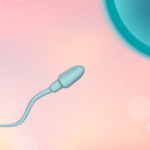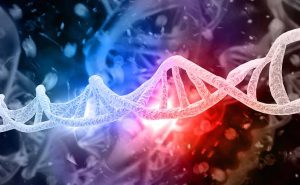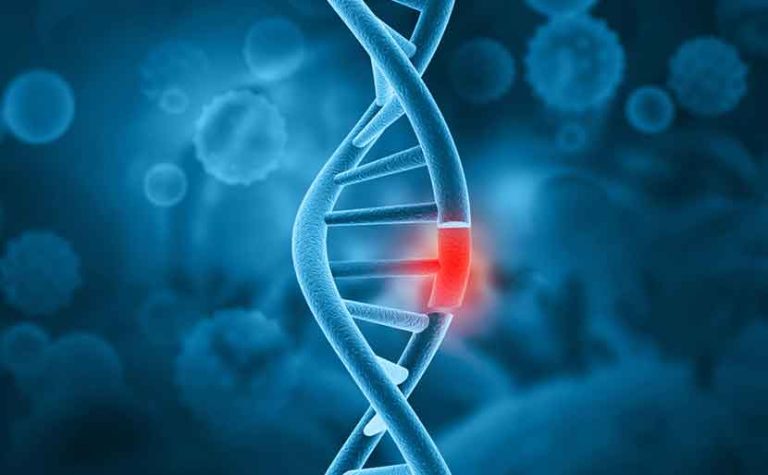Learn about 1p36 Deletion Syndrome, a chromosomal disorder caused by the deletion of a specific region on chromosome 1. Discover its symptoms, causes, and how it can be detected prenatally through NIPT at Hiro Clinic.
- What is 1p36 deletion syndrome?
- Symptoms of 1p36 deletion syndrome
- Characteristics of 1p36 deletion syndrome
- Causes of 1p36 deletion syndrome
- Diagnosis of 1p36 deletion syndrome
- Probability of having 1p36 deletion syndrome
- Tests and treatments for 1p36 deletion syndrome
- Prognosis and lifespan of 1p36 deletion syndrome
- Is 1p36 deletion syndrome hereditary?
- What can be learned from NIPT (Non-Invasive Prenatal Testing)
- Conclusion
What is 1p36 deletion syndrome?
1p36 Deletion Syndrome is caused by the deletion of a specific region on the terminal end of chromosome 1, known as the telomeric region. This chromosomal deletion involves a very small part of the chromosome, making it difficult to detect with standard chromosomal testing. It is a type of congenital chromosomal abnormality.
The causes of 1p36 Deletion Syndrome are attributed to either a congenital chromosomal mutation or the inheritance of a translocation from one of the parents, resulting in the deletion of chromosome 1. Additionally, 1p36 Deletion Syndrome is recognized by the Ministry of Health, Labour and Welfare as a designated intractable disease.
Because the deletion involves multiple genes, the symptoms vary depending on the deleted genes. Although there is individual variation in the symptoms of 1p36 Deletion Syndrome, many cases exhibit characteristic facial features (straight eyebrows, deeply set eyes, recessed midface, pointed chin) and severe intellectual disabilities recognized after birth. Other symptoms include hypotonia, refractory epilepsy, cleft palate, visual impairments, hearing loss, short stature, obesity, and congenital heart defects.
What is chromosome deletion?
There are a total of 46 chromosomes, consisting of 22 pairs of autosomes (44 chromosomes) and 2 sex chromosomes (XY in males and XX in females). Of each pair, one chromosome is inherited from the mother and the other from the father.
Additionally, the short part of the chromosome, located on the side of the centromere, is called the short arm (p), while the long part is called the long arm (q). It is also known as a microdeletion syndrome. For diagnosis, various methods are used, including the traditional G-banding method, fluorescence in situ hybridization (FISH), chromosomal microarray analysis, and cell-free DNA analysis from maternal plasma, each with different characteristics.
1p36 Deletion Syndrome was first discovered in the 1980s. Since the causative genes of 1p36 Deletion Syndrome that would be targeted for treatment have not been identified, it is classified as a designated intractable disease without an established fundamental treatment.
Additionally, since symptoms (clinical manifestations) vary among patients, symptomatic treatment is provided for each symptom. Regarding the prognosis of 1p36 Deletion Syndrome, there are both symptoms that persist throughout life and those that subside with treatment. However, intellectual disability is considered lifelong and cannot be cured. Similarly, due to the lack of data on the average life expectancy of patients with 1p36 Deletion Syndrome, it cannot be represented by a clear figure.
※1p36 (1 refers to chromosome 1, p to the short arm, and 36 to the region)
※Chromosomes are rod-shaped substances in the nucleus of our cells that contain many genes for transmitting genetic information
※Chromosome 1 is one of the 22 types of autosomes and is characterized by being the longest
Symptoms of 1p36 deletion syndrome
The main symptoms of 1p36 Deletion Syndrome include developmental delay, intellectual disability, seizures, vision impairment, hearing loss, short stature, brain abnormalities, cleft palate, congenital heart defects, kidney abnormalities, and characteristic facial features (straight eyebrows, deeply set eyes, recessed midface, and pointed chin).
Characteristics of 1p36 deletion syndrome
In 1p36 Deletion Syndrome, notable facial and physical features are recognized.
Facial features
Characteristic Facial Features (Frequency Nearly 100%)
The facial features of 1p36 Deletion Syndrome show significant characteristics. It is known that individual parts exhibit notable features such as a large forehead, straight (linear) eyebrows, deeply set eyes, recessed midface (broad and sunken nasal bridge), long philtrum, pointed chin, and low-set ears.
Developmental delay (almost 100% frequency)
Approximately 90% of patients with 1p36 Deletion Syndrome have severe intellectual disability, while 10% have mild to moderate intellectual disability.
Among intellectual disabilities, there is a high incidence of delayed language development, and 75% of affected individuals are unable to express their thoughts or feelings verbally. Additionally, behavioral abnormalities such as self-injurious behavior and temper tantrums can also be observed.
Feeding difficulties due to decreased muscle tone (frequency over 70%)
Patients with 1p36 Deletion Syndrome are known to have weakened muscle contraction functions and may experience problems swallowing food due to facial abnormalities. Swallowing difficulties can lead to food accidentally entering the trachea or the reflux of stomach contents, causing frequent vomiting.
Congenital heart defects (frequency 40-70%)
Congenital heart disease refers to a condition where there are structural abnormalities in the heart or blood vessels from birth. The heart is divided into four chambers: the right atrium, right ventricle, left atrium, and left ventricle, each connected to large blood vessels.
Types of structural abnormalities in the heart due to congenital heart disease include “ventricular septal defect” or “atrial septal defect,” where there is a hole in the muscular wall between the chambers of the heart; “valvular heart disease,” where the opening and closing of the heart valves are impaired; and “overriding aorta,” where the position of the blood vessel connected to the left ventricle is displaced.
In 1p36 Deletion Syndrome, it is not uncommon for these structural abnormalities to be combined. Due to a significant decrease in the heart’s ability to pump oxygenated blood effectively, urgent surgery is often required.
Seizures (around 50% frequency)
Epilepsy in patients with 1p36 Deletion Syndrome is reported to occur between 4 days and a few years after birth.
An epileptic seizure involves sudden stiffening of muscles in the whole body or part of the body, causing convulsions where the arms and legs shake violently. Many of the epileptic seizures in patients with 1p36 Deletion Syndrome can be controlled with drug therapy, but in some cases, the medication is less effective, making treatment difficult (refractory epilepsy).
Other features
Cerebral malformations, delayed closure of the anterior fontanelle, deformities of the fingers and toes, hypothyroidism, vision impairments, strabismus, cataracts, obesity, hearing impairments, and abnormalities or malformations of the skeleton, genitals, and kidneys are recognized.

Causes of 1p36 deletion syndrome
The cause of 1p36 Deletion Syndrome is believed to be the deletion of a region several megabases (1.8-2.2 Mb) away from the telomeric region on the short arm of chromosome 1, resulting in the genes in that region not functioning properly.
This region includes genes such as MMP23B, GABRD, SKI, PRDM16, KCNAB2, RERE, UBE4B, CASZ1, PDPN, SPEN, ECE1, HSPG2, and LUZP1. Dysfunction of these genes is suggested to cause the symptoms and characteristics of 1p36 Deletion Syndrome. However, the specific causative genes have not yet been identified.
The deletion is thought to result either from congenital mutations occurring after fertilization or from unbalanced translocation inherited from parents who are carriers.
※Translocation carrier: An individual with a normal phenotype but with translocation (a condition where segments of two different chromosomes have been exchanged) present in their chromosomes.
Diagnosis of 1p36 deletion syndrome
Diagnosis of 1p36 Deletion Syndrome is conducted by confirming the deletion through the tests mentioned below, and by identifying the aforementioned symptoms. Due to the variety of symptoms, the severity is classified into different categories.
Evaluations include determining whether epilepsy is refractory, assessing the impact on daily life using the modified Rankin scale, evaluating diet and nutrition, assessing respiratory function, and evaluating heart disease. These assessments help determine the appropriate treatment targets.
Probability of having 1p36 deletion syndrome
The probability of having 1p36 Deletion Syndrome is globally 1 in 5,000 people (0.02%). In Japan, around 15 cases are born annually, and at birth, it is observed in 1 out of 4,000 to 10,000 individuals, with females being twice as likely to be affected. However, 1p36 Deletion Syndrome is often not well-known, and many individuals may reside in facilities without being diagnosed. Additionally, it is difficult to detect with standard tests, so the exact incidence rate is unknown.

Tests and treatments for 1p36 deletion syndrome
For testing 1p36 Deletion Syndrome, the aforementioned G-banding method, fluorescence in situ hybridization (FISH), chromosomal microarray analysis, and cell-free DNA analysis from maternal plasma are used. These tests confirm the deletion in the terminal region of chromosome 1.
These tests identify interstitial deletions in the DNA constituting the 1p36 chromosome, specifically in regions 1-2 Mb away from the telomeric region, and are used in diagnostics.
In many cases, the symptoms of these patients vary due to differences in the deleted regions.
The clinical and genetic heterogeneity observed in patients with 1p36 Deletion Syndrome complicates information regarding symptoms and prognosis. This challenge is likely due to the fact that the causative genes have not yet been identified.
Currently, most genes involved in the phenotypic expression related to 1p36 Deletion Syndrome are beginning to be identified through the combination of molecular cytogenetic mapping and the development of animal models.
Furthermore, the widespread use of copy number variation detection methods using microarrays is expected to enable rapid identification of patients with small 1p36 deletions.
Additionally, if the causative genes or the extent and location of the deletions can be mapped, it would facilitate the provision of information from doctors to patients and their families.
On the other hand, there are very few reports on prenatal ultrasound findings observed in 1p36 Deletion Syndrome. Prenatal diagnosis of 1p36 Deletion Syndrome using ultrasound and chromosomal microarray is being considered, and various testing methods combining single or multiple approaches are being explored.
Regarding the treatment of 1p36 Deletion Syndrome, fundamental treatments are not yet established, and symptomatic treatment mainly involves pharmacotherapy or surgery, as well as specialized training tailored to each symptom.
Prognosis and lifespan of 1p36 deletion syndrome
As previously mentioned, only about 40 years have passed since the discovery of 1p36 Deletion Syndrome, and due to the small number of patients, accurate life expectancy figures are not available.
However, since there are cases of patients surviving into adulthood, it cannot be definitively said that the syndrome necessarily leads to a short life.
Prognosis of 1p36 deletion syndrome
Regarding the prognosis of 1p36 Deletion Syndrome, it is suggested that it varies depending on the symptoms present, but it is determined by the extent of the deletion in the p36 region.
Specifically, intellectual disability is considered to persist for a lifetime, and while some patients experience remission of epileptic seizures, many continue to have seizures throughout their lives. In cases of congenital heart disease, treatment of the heart disease often significantly influences the prognosis.
From these facts, it can be said that 1p36 Deletion Syndrome, lacking fundamental treatment, is greatly influenced by the presence and severity of refractory epilepsy and congenital heart disease in determining life prognosis.
Is 1p36 deletion syndrome hereditary?
As previously mentioned, if the parents are carriers, there is a possibility of inheriting the syndrome from the parents.
If either parent has a balanced translocation in their chromosomes, their child may develop 1p36 Deletion Syndrome due to an unbalanced translocation.
A translocation refers to the exchange of positions between two parts of chromosomes. When the arrangement is different but the amount of genetic information remains the same, it is called a balanced translocation.
In unbalanced translocation, in addition to the different arrangement, there is an excess or deficiency in the amount of genetic information, leading to various abnormalities such as 1p36 Deletion Syndrome.
However, since the causative genes have not been identified, it is unclear which type of translocation causes or inherits 1p36 Deletion Syndrome.
Furthermore, it remains unclear whether 1p36 Deletion Syndrome is inherited, considering that there are few known cases of children born to patients with 1p36 Deletion Syndrome and the number of such cases is extremely small.
What can be learned from NIPT (Non-Invasive Prenatal Testing)
In recent years, the number of people undergoing NIPT (Non-Invasive Prenatal Testing) has been increasing.
The reasons for this include the increase in advanced maternal age pregnancies (35 years and older) due to later marriages, and the fact that genetic testing can be performed with just a blood test, without affecting the mother or the unborn fetus.
As maternal age increases, the likelihood of giving birth to a baby with a congenital disorder caused by chromosomal abnormalities also rises. The most common chromosomal abnormality at birth is Down syndrome (trisomy 21).
The frequency of having a child with Down syndrome (trisomy 21) is 1/1667 at age 20, 1/385 at age 35, and 1/30 at age 45, increasing with age.
In comparison, the frequency of having a child with any chromosomal abnormality is 1/526 at age 20, 1/192 at age 35, and 1/21 at age 45, with the frequency being even higher.
This data is from the early 1980s. Considering that microdeletion syndromes like 1p36 Deletion Syndrome were difficult to detect with standard tests and that advanced testing methods (FISH, microarray) were developed only after the late 1980s, it is anticipated that the current frequency of children born with chromosomal abnormalities might be slightly higher.
As previously mentioned, 1p36 Deletion Syndrome is caused by the deletion of a specific region, and because this region has been identified, there are cases where the possibility of 1p36 Deletion Syndrome can be detected prenatally through NIPT.
Currently, the diseases that NIPT covers at certified facilities are Down syndrome (trisomy 21), Edwards syndrome (trisomy 18), and Patau syndrome (trisomy 13). Microdeletion syndromes such as 1p36 Deletion Syndrome are not included.
However, since some non-certified facilities include microdeletion testing in their NIPT plans, it is possible to know the likelihood of 1p36 Deletion Syndrome in the fetus before birth. It should be noted that NIPT is not a definitive diagnosis, and an amniocentesis is required to diagnose 1p36 Deletion Syndrome.
Conclusion
As of 2022, there is no established fundamental treatment for 1p36 Deletion Syndrome. However, it is possible to detect the presence of 1p36 Deletion Syndrome early in pregnancy through NIPT (Non-Invasive Prenatal Testing).
At Hiro Clinic NIPT, anyone can undergo NIPT after confirming pregnancy through an ultrasound examination. In addition to detecting Down syndrome alone, it is also possible to detect chromosomal abnormalities across all chromosomes. This allows for preparation for potential congenital disorders in the baby after birth, including adjustments to the living environment.
If you have any questions about NIPT or congenital disorders caused by chromosomal abnormalities in your baby, or if you are unsure about which NIPT (Non-Invasive Prenatal Testing) plan to choose, please feel free to consult with the staff at Hiro Clinic NIPT. Let’s find the best plan together for your unborn baby.
【References】
- MedicineNet – 1p36 Deletion Syndrome Life Expectancy, Cause, Symptoms & Signs
- Nanbyo Information Center – 1p36 Deletion Syndrome (Designated Intractable Disease 197)
- 1p36 deletion support&awareness – What is 1p36 Deletion Syndrome?
- Medical Note – 1p36 Deletion Syndrome
- Taylor & Francis online- Prenatal detection of 1p36 deletion syndrome: ultrasound findings and microarray testing results
- PMC – 1p36 deletion syndrome: an update
- Annals Child Neurology – Deep Phenotyping in 1p36 Deletion Syndrome
Learn about 1p36 Deletion Syndrome, a chromosomal disorder caused by the deletion of a specific region on chromosome 1. Discover its symptoms, causes, and how it can be detected prenatally through NIPT at Hiro Clinic.
Article Editorial Supervisor

Dr. Keizo Nitta
Director, Hiro Clinic Sapporo Station Clinic
With the increasing trend of advanced maternal age at childbirth, the demand for NIPT (Non-Invasive Prenatal Testing) is on the rise. Moreover, we anticipate that in the future, the accuracy and scope of NIPT will continue to expand. At our clinic, we believe it is our obligation to appropriately communicate the information that can be known and desired in current medical practice to expectant mothers.
Alongside the right to know, there also exists the right not to know. We consider it a medical duty to refrain from disclosing information that the patient does not wish to know. At our clinic, you have the option to choose the information you want to know.
We encourage you to consult with us to determine which plan is best for you and to select the testing that suits your needs.
Career Summary
1996 Saitama Medical University Hospital
2002 Kanagawa Children’s Medical Center
2004 Kokumin Kyosai Yokohama Minami Kyosai Hospital
2010 Yokosuka Municipal Uwamachi Hospital
2012 Municipal Mikasa General Hospital
2015 Medical Corporation Ryokuryokai Nagunuma Pediatrics
2019 Town Minami Horo Hospital (National Health Insurance)
Qualifications
Member of the Allergy Society
Member of the Pediatric Allergy Society
 中文
中文























